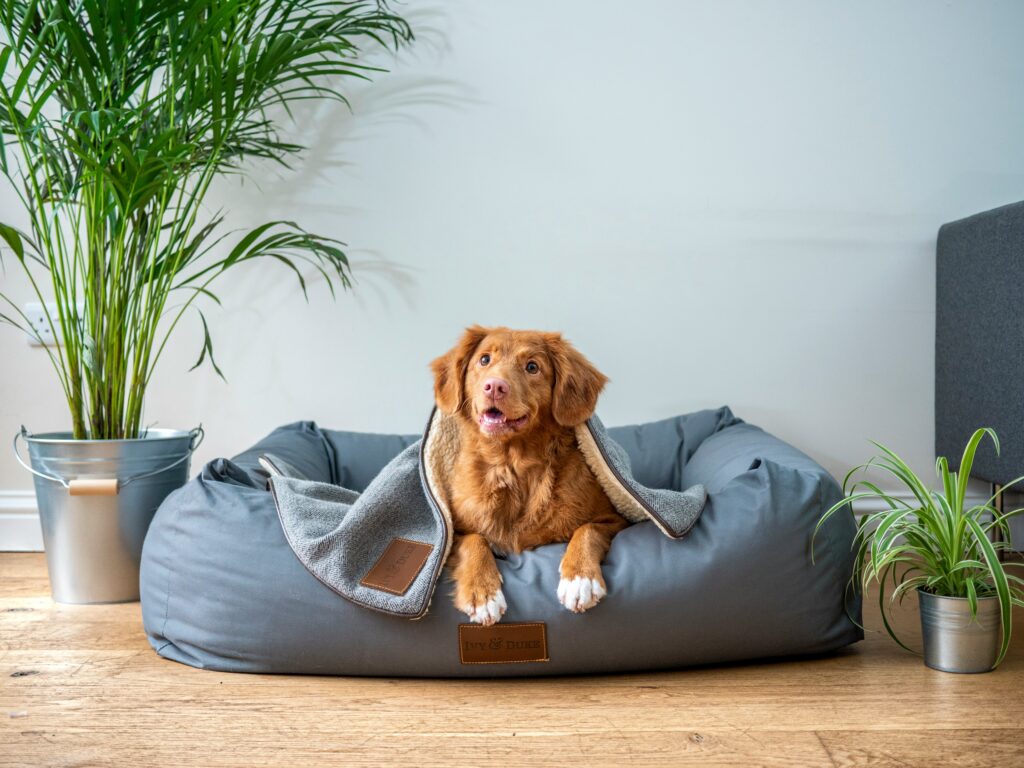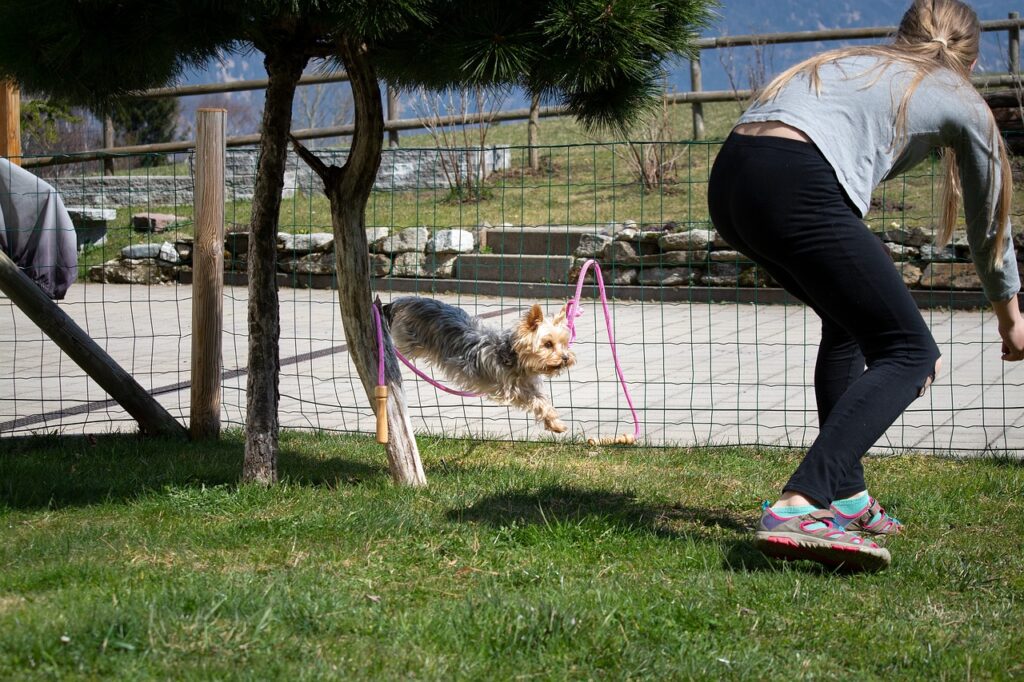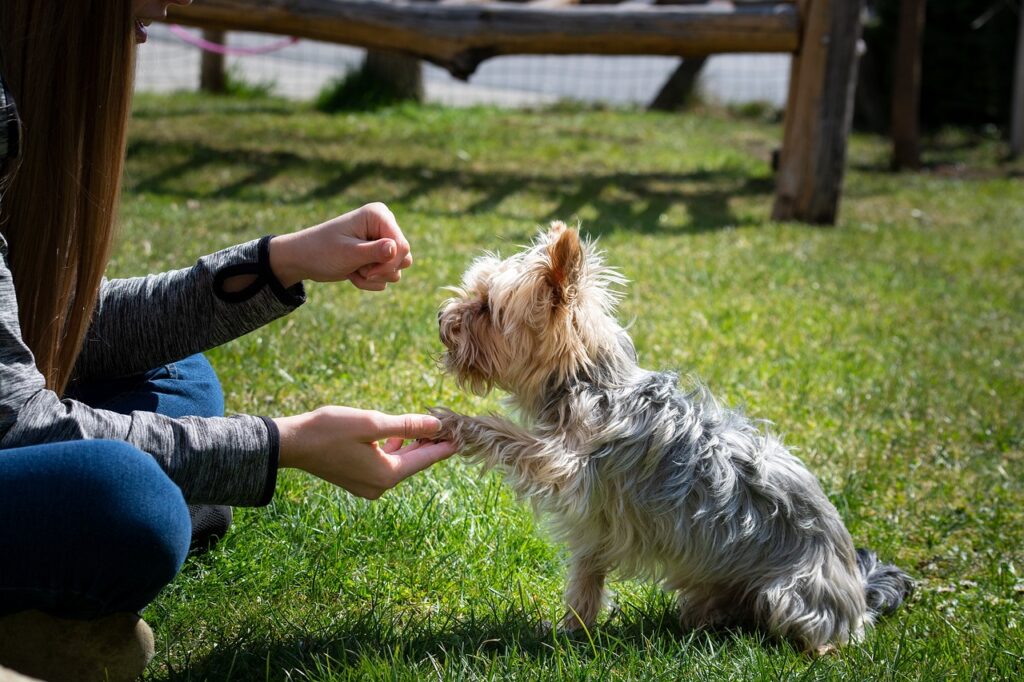Training your dog to sleep in its own bed is an essential part of establishing boundaries and routines in your home. Not only does it provide a sense of security and comfort for your furry friend, but it also promotes independence and good behavior. By teaching your dog to sleep in its own bed, you are creating a space that is exclusively theirs, where they can relax and unwind after a long day.
One of the key benefits of training your dog to sleep in its own bed is that it helps establish boundaries. Dogs are pack animals and thrive on structure and routine. By designating a specific sleeping area for your dog, you are setting clear boundaries and teaching them where they are allowed to rest. This can help prevent them from sleeping on furniture or in other areas of the house where they may not be welcome.
In addition to establishing boundaries, training your dog to sleep in its own bed also helps create a consistent routine. Dogs thrive on routine and knowing what to expect. By creating a bedtime routine that includes going to their bed, you are providing them with a sense of security and predictability. This can help reduce anxiety and promote better sleep for both you and your dog.
Choosing the Right Bed for Your Dog
When it comes to choosing a bed for your dog, there are several factors to consider. First and foremost, you want to make sure the bed is the right size for your dog. It should be large enough for them to stretch out comfortably, but not so big that they feel overwhelmed or insecure. Consider the size and breed of your dog when selecting a bed.
Comfort is another important factor to consider when choosing a bed for your dog. Look for beds that are made from soft, supportive materials that will provide cushioning and support for your dog’s joints. Memory foam or orthopedic beds are great options for older dogs or dogs with joint issues. Additionally, consider the bed’s washability and durability, as accidents and wear and tear are inevitable.
There are many different types of beds available for dogs, including traditional pillow beds, bolster beds, and nesting beds. Pillow beds are simple and versatile, while bolster beds have raised sides that provide a sense of security. Nesting beds have a lower front entrance and higher sides, creating a cozy den-like space for your dog. Consider your dog’s preferences and sleeping habits when choosing the type of bed that will best suit their needs.
Establishing a Bedtime Routine
Establishing a bedtime routine is crucial when training your dog to sleep in its own bed. Dogs thrive on consistency and routine, so it’s important to create a predictable schedule that they can rely on. This will help them understand when it’s time to wind down and go to sleep.
The first step in creating a bedtime routine is to establish a consistent bedtime. Choose a time that works for both you and your dog, and stick to it every night. This will help regulate your dog’s internal clock and promote better sleep.
Next, create a series of steps that you will follow each night before bed. This could include things like taking your dog for a walk or play session to tire them out, feeding them dinner, brushing their teeth, and then leading them to their bed. By following the same steps in the same order each night, you are signaling to your dog that it’s time to wind down and go to sleep.
A bedtime routine not only benefits your dog but also benefits you as well. It provides structure and predictability to your evenings, allowing you to relax and unwind knowing that your dog is settled and comfortable in their own bed.
Creating a Comfortable Sleeping Environment
Creating a comfortable sleeping environment is essential when training your dog to sleep in its own bed. Just like humans, dogs have specific preferences when it comes to their sleeping environment. By taking these preferences into consideration, you can create a space that is cozy and inviting for your furry friend.
One of the most important factors to consider when creating a sleeping environment for your dog is temperature. Dogs are sensitive to temperature and can become uncomfortable if they are too hot or too cold. Make sure the room where your dog sleeps is kept at a comfortable temperature, and provide them with blankets or a dog bed that will help regulate their body temperature.
Lighting is another important factor to consider when creating a sleeping environment for your dog. Dogs are naturally sensitive to light, so it’s important to create a dark and quiet space for them to sleep. Consider using blackout curtains or shades to block out any external light sources, and try to minimize noise in the area where your dog sleeps.
When it comes to creating a cozy and comfortable space for your dog, consider their individual preferences. Some dogs prefer a soft and plush bed, while others may prefer something more firm. Pay attention to how your dog sleeps and what positions they prefer, and choose a bed that will accommodate their sleeping style.
Using Positive Reinforcement Techniques
Positive reinforcement is a powerful tool when it comes to training your dog to sleep in its own bed. By using positive reinforcement techniques, you can encourage your dog to associate their bed with positive experiences and rewards.
One of the most effective ways to encourage your dog to sleep in its own bed is to make it a rewarding experience. Start by placing treats or toys in their bed, so they associate it with something positive. You can also use praise and affection as rewards when your dog goes to their bed on command.
Consistency is key when using positive reinforcement techniques. Make sure you are rewarding your dog every time they go to their bed, especially in the beginning stages of training. This will help reinforce the behavior and make it more likely that they will continue to sleep in their own bed.
It’s important to note that positive reinforcement should be used in conjunction with other training techniques, such as establishing a bedtime routine and creating a comfortable sleeping environment. By combining these techniques, you can create a positive and rewarding experience for your dog that will encourage them to sleep in their own bed.
Consistency is Key: Sticking to a Schedule
Consistency is key when training your dog to sleep in its own bed. Dogs thrive on routine and knowing what to expect, so it’s important to stick to a schedule as much as possible.
One of the most important aspects of consistency is sticking to a consistent bedtime. Choose a time that works for both you and your dog, and make sure you are putting them to bed at the same time every night. This will help regulate their internal clock and promote better sleep.
Consistency also applies to the steps you take before bed. Make sure you are following the same routine each night, in the same order. This will help signal to your dog that it’s time to wind down and go to sleep.
It’s important to note that consistency applies not only to bedtime but also to other aspects of your dog’s routine. Make sure you are feeding them at the same time each day, taking them for walks at the same time, and providing them with regular exercise and mental stimulation. By maintaining a consistent schedule, you are providing your dog with structure and predictability, which can help reduce anxiety and promote better sleep.
Addressing Separation Anxiety
Separation anxiety is a common issue that many dogs face when it comes to sleeping in their own bed. Signs of separation anxiety can include excessive barking or whining, destructive behavior, pacing, or attempts to escape.
If your dog is experiencing separation anxiety when it comes to sleeping in their own bed, there are several techniques you can try to address the issue. One of the most effective techniques is to gradually desensitize your dog to being alone. Start by leaving them alone for short periods of time and gradually increase the duration as they become more comfortable.
Another technique is to provide your dog with a comfort item, such as a blanket or toy, that has your scent on it. This can help provide them with a sense of security and comfort when you are not around.
If your dog’s separation anxiety is severe or persistent, it may be necessary to seek professional help. A professional dog trainer or behaviorist can provide you with guidance and support in addressing the issue and developing a plan that is tailored to your dog’s specific needs.
Dealing with Barking or Whining
Barking or whining at night can be a common issue when training your dog to sleep in its own bed. There are several reasons why your dog may bark or whine at night, including separation anxiety, boredom, or the need to go outside.
If your dog is barking or whining at night, it’s important to address the underlying cause of the behavior. If they are experiencing separation anxiety, try implementing the techniques mentioned earlier to address the issue. If they are bored, make sure they are getting enough exercise and mental stimulation during the day.
One technique for addressing barking or whining at night is to ignore the behavior. This can be difficult, especially if your dog’s barking or whining is loud or persistent. However, by giving in and providing attention when they bark or whine, you are reinforcing the behavior and making it more likely that they will continue to do it.
Instead, try waiting until your dog has stopped barking or whining before providing attention or letting them out of their bed. This will help teach them that quiet behavior is rewarded, while barking or whining is not.
It’s important to note that addressing barking or whining at night requires patience and consistency. It may take time for your dog to learn that barking or whining will not get them what they want, but with consistent training and reinforcement, they will eventually learn to settle down and sleep in their own bed.
Encouraging Independence
Encouraging independence is an important part of training your dog to sleep in its own bed. Dogs are social animals and often rely on their owners for comfort and security. However, it’s important to teach them that they can also feel comfortable and secure in their own space.
One of the benefits of encouraging independence is that it can help reduce separation anxiety. By teaching your dog to feel comfortable and secure in their own bed, you are helping them develop the confidence to be alone.
There are several techniques you can use to promote independence in your dog. One technique is to gradually increase the distance between you and your dog when they are in their bed. Start by sitting next to their bed and gradually move further away as they become more comfortable.
Another technique is to provide your dog with interactive toys or puzzles that they can play with on their own. This can help keep them entertained and mentally stimulated when they are alone.
It’s important to note that encouraging independence should be done gradually and at your dog’s own pace. Pushing them too quickly or forcing them into situations they are not ready for can cause stress and anxiety. Be patient and supportive as your dog learns to feel comfortable and secure in their own space.
Troubleshooting Common Sleep Issues
Even with the best training and preparation, it’s possible that your dog may still experience sleep issues from time to time. Common sleep issues can include restlessness, excessive panting, or waking up frequently during the night.
When troubleshooting common sleep issues, it’s important to identify the root cause of the problem. Is your dog experiencing physical discomfort? Are they anxious or stressed? Are there external factors, such as noise or temperature, that are disrupting their sleep?
Once you have identified the root cause of the issue, you can take steps to address it. For example, if your dog is experiencing physical discomfort, consider investing in a more supportive or orthopedic bed. If they are anxious or stressed, try implementing relaxation techniques, such as massage or aromatherapy, to help them relax before bed.
It’s important to note that troubleshooting common sleep issues may require some trial and error. What works for one dog may not work for another, so it’s important to be patient and persistent in finding a solution that works for your furry friend.
The importance of training your dog to sleep in its own bed cannot be overstated. By following these tips and techniques, you can create a comfortable and secure sleeping environment for your furry friend, while also establishing boundaries and routines that benefit both you and your dog. Remember to choose the right bed for your dog, establish a bedtime routine, create a comfortable sleeping environment, use positive reinforcement techniques, stick to a schedule, address separation anxiety and barking or whining, encourage independence, and troubleshoot common sleep issues. With consistency and patience, you can successfully train your dog to sleep in its own bed and enjoy peaceful nights for both you and your furry friend.
If you’re struggling with training your dog to sleep in its own bed, you may find the book “Dog Training Bible: How to Raise Your Furry Life Companion into a Well-Behaved and Happy Good Citizen Using Positive Reinforcement Training Techniques” helpful. This comprehensive guide offers proven methods for training your dog using positive reinforcement, which can be particularly effective when it comes to teaching them to sleep in their own bed. With step-by-step instructions and expert advice, this book is a valuable resource for any dog owner looking to improve their training skills.



